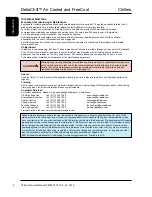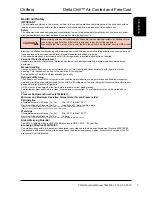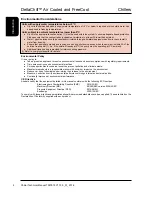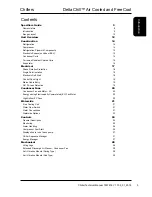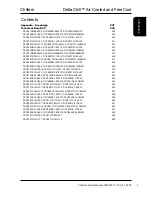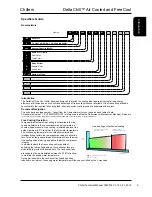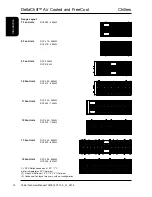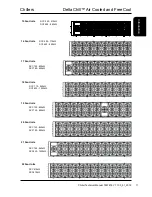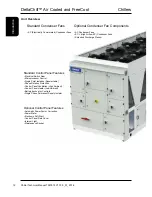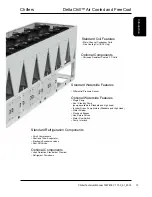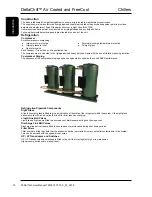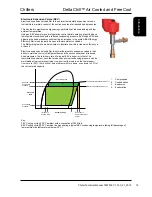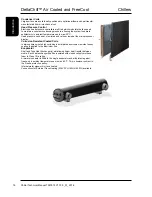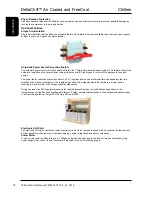
Chillers
DeltaChill™ Air Cooled and FreeCool
Introduction
5
Chiller Technical Manual 7267818 V1.13.0_01_2018
Specifiers Guide
9
Nomenclature 9
Introduction 9
Range Layout
10
Unit Overview
12
Construction
14
Refrigeration
14
Compressor 14
Refrigeration Pipework Components
14
Electronic Expansion Valves (EEV)
15
Condenser Coils
16
Corrosion Resistant Coated Coils
16
Evaporator 16
Electrical
17
Phase Rotation Protection
18
Single Point Isolation
18
Electronic Soft Start
18
Control Panel Light
19
Mains Cable Entry
19
R410A Leak Detection
19
Condenser Fans
20
Condenser Fan and Motor - AC
20
Energy saving Electronically Commutated (EC) Fan Motor
20
High Airflow EC Fans
20
Waterside
21
Free Cooling Coil
21
Water Flow Switch
21
Water Connections
21
Waterside Options
23
Controls
24
General Description
24
Monitoring 25
Alarm Handling
26
Compressor Fast Start
26
Displays hours run of each pump.
27
Chiller Sequence Manager
27
Energy Manager
27
Mechanical
28
Lifting Lugs
28
Extended Discharge Air Plenum - Condenser Fan
28
Anti Vibration Mounts (Spring Type)
28
Anti Vibration Mounts (Pad Type)
28
Contents
Environmental Considerations
Units with supply water temperatures below +5°C
●
Glycol is recommended when a supply water temperature of +5°C or below is required or when static water can
be exposed to freezing temperatures.
Units subject to ambient temperatures lower than 0°C
●
Glycol of an appropriate concentration (1) must be used within the system to ensure adequate freeze protection.
Please ensure that the concentration is capable of protection to at least 3K lower than ambient.
●
Water / glycol solution should be constantly circulated through all waterside pipework and coils to avoid static
water from freezing.
●
Ensure that pumps are started and running even during shut down periods, when the ambient is within 3K of the
solution freeze point (1) (i.e. if the solution freezes at 0°C, the pump must be operating at 3°C ambient).
●
Additional trace heating is provided for interconnecting pipework.
(1) Refer to your glycol supplier for details.
Environmental Policy
It is our policy to:
●
Take a proactive approach to resolve environmental issues and ensure compliance with regulatory requirements.
●
Train personnel in sound environmental practices.
●
Pursue opportunities to conserve resources, prevent pollution and eliminate waste.
●
Manufacture products in a responsible manner with minimum impact on the environment.
●
Reduce our use of chemicals and minimise their release to the environment.
●
Measure, control and verify environmental performance through internal and external audits.
●
Continually improve our environmental performance.
CE Directive
Airedale certify that the equipment detailed in this manual conforms with the following EC Directives:
Electromagnetic Compatibility Directive (EMC)
2014/30/EU
Machinery Directive (MD)
89/392/EEC version 2006/42/EC
Pressure Equipment Directive (PED)
2014/68/EU
Ecodesign
2009/125/EC
To comply with these directives appropriate national & harmonised standards have been applied. These are listed on the
Declaration of Conformity, supplied with each product.


